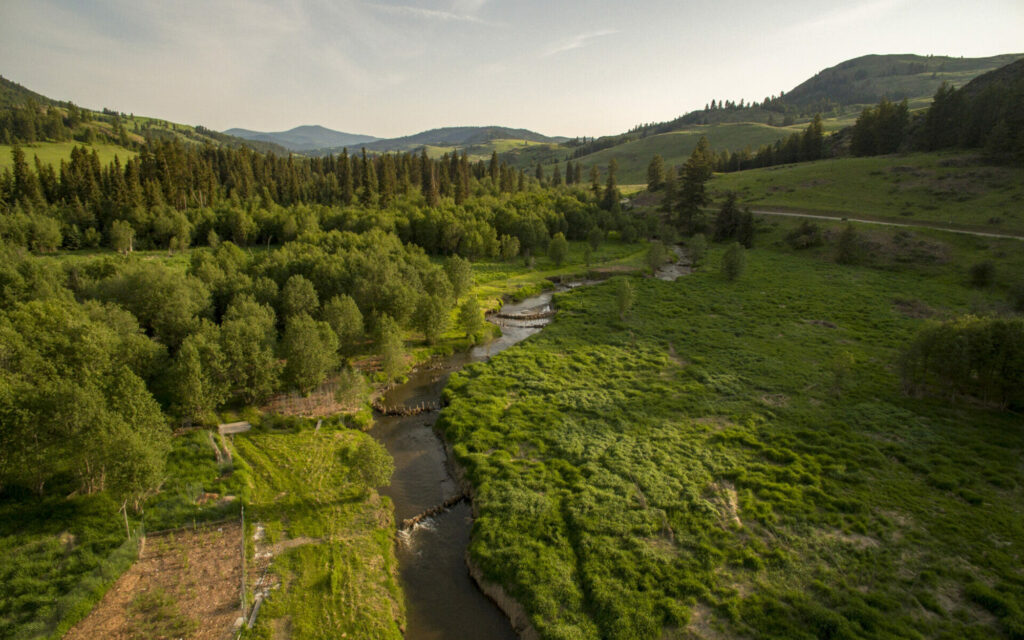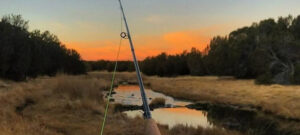New chapter in a longstanding partnership to recover and reconnect trout waters on public lands
A century ago, Gifford Pinchot wrote: “The vast possibilities of our great future will become realities only if we make ourselves, in a sense, responsible for that future.”
As the nation’s first head of the U.S. Forest Service after its creation by Theodore Roosevelt, Pinchot put his words into practice. Under his leadership, publicly owned forest reserves tripled in size. Today, the Forest Service and its partners have an opportunity to expand conservation across the nation at a scale unlike any other period since.
Passage of the Bipartisan Infrastructure Law and the climate resiliency law is allowing the Forest Service to deploy billions of dollars in funding for restoration work and hazardous fuels reduction across the national forests and adjacent private lands.
Trout Unlimited and Forest Service working to restore and reconnect fish habitat
At Trout Unlimited, we are excited to play an outsize role in this work. This week, we announced a five-year agreement with the Forest Service of up to $40 million in infrastructure funding to help reconnect and restore the “green lands” that we collectively own as a nation.
The agreement builds on years of work: In recent years, we have leveraged $20 million to carry out $62 million worth of projects on national forests, restoring more than 400 miles of fish habitat, reconnecting another 700 miles by removing fish passage barriers, and improving hundreds of thousands of acres of National Forest lands.
It is difficult to overstate the significance of the national forests to trout and salmon conservation and recovery. More than 40 percent of all blue-ribbon trout streams flow across the National Forest system. Native trout strongholds overlay almost perfectly with national forests. In fact, about 60 percent of all native inland trout habitat in the western United States are found on Forest Service managed lands. As changing climate shrinks the availability of suitable coldwater habitat, research indicates that in a few years, 80 percent of all cutthroat water in Montana will be found on National Forests.
TU and the Forest Service are working to shore up these rivers and streams against a changing climate.
Recovering native trout species from Montana to West Virginia
In Montana’s Lolo National Forest, TU and other partners worked to remove the Rattlesnake dam and connect the Rattlesnake wilderness to the town of Missoula. This is after years of investment to restore the Ninemile drainage from a legacy of placer mining. Paul Parson, one of the project leaders on Ninemile says, “Ninemile Creek used to generate so many trout, people called it a fish factory. Runoff from mines in the area has impaired the watershed, but they’re getting cleaned up and we are seeing a great comeback.”
In West Virginia on the Monongahela National Forest, the Forest Service, TU, and other partners expanded brook trout habitat to more than 100 miles of streams. One of our project leaders, Dustin Wichterman, reports catching 15-16-inch brook trout in restored areas. This matters to me for several reasons, one of which is that these waters are the drinking water supply for my home in Washington, D.C.
Over the ridge in the George Washington & Jefferson National Forests, TU’s Virginia project manager, Seth Coffman, told me how he is working with the agency to remove a dam and then repatriate native brookies into a high elevation stream that is most likely to be resilient to rising temperatures that are associated with climate change.
Our new agreement with the Forest Service will allow us to improve fish habitat and angling opportunities. The reality, however, is that the angling benefits are only part of the story. The work will also have broader societal benefits. To be certain, replacing a perched and undersized culvert with a bridge will make it easier for fish to move in response to heat waves, floods, fire, and drought. Just as important is the fact that it will alleviate the likelihood of future flooding damaging downstream infrastructure, and that’s good for the communities that depend on it.
Beaver reintroductions help store scarce water in a drier West
The wet meadow restoration work in the headwaters of the Okanogan-Wenatchee National Forest will provide vital spawning and rearing habitat for endangered spring Chinook, steelhead and bull trout.
Equally important are the societal benefits. Healthy streamside areas and high elevation meadows are natural fire breaks, and provide downstream late-season flows for irrigators as well as fish. Crystal Elliot-Perez directs our habitat work in the state and says, “There are many benefits to reintroducing beaver at a watershed scale. As they make their home on the landscape, they create water storage, and in a place where water is becoming scarce and water temperatures going up, this is critical for climate resiliency.”
The basic functions of a healthy watershed are to catch, store and slowly release water over time. Pinchot once testified before Congress and poured a glass of water over a wooden desk and watched as it all ran on the floor. He said this represents an unhealthy watershed.
Pinchot then put the desks’ ink blotter on the desk and poured another glass of water. The water absorbed into the blotter and only a few drops hit the floor. This is how a healthy watershed functions, he said.
Our restoration work helps make America’s watersheds more like Pinchot’s blotter. Healthy watersheds catch, store, and slowly release water over time. Water then percolates into the groundwater. Green vegetation grows. Trees provide more shade and structure to the stream. Sedges begin to crawl upslope.
The recent agreement between the Forest Service and TU will supercharge restoration activities such as those described above, and help achieve Pinchot’s objective for the Forest Service:
“The greatest good for the greatest number for the longest time.”
Click HERE for the full story by Chris Wood on tu.org.




